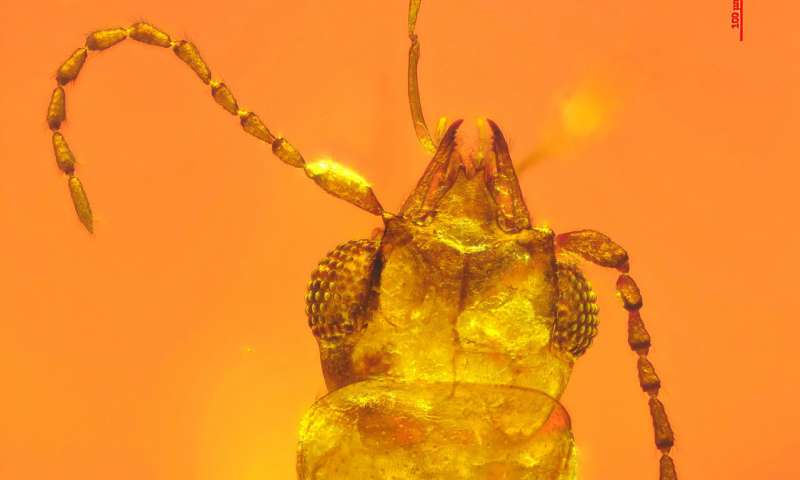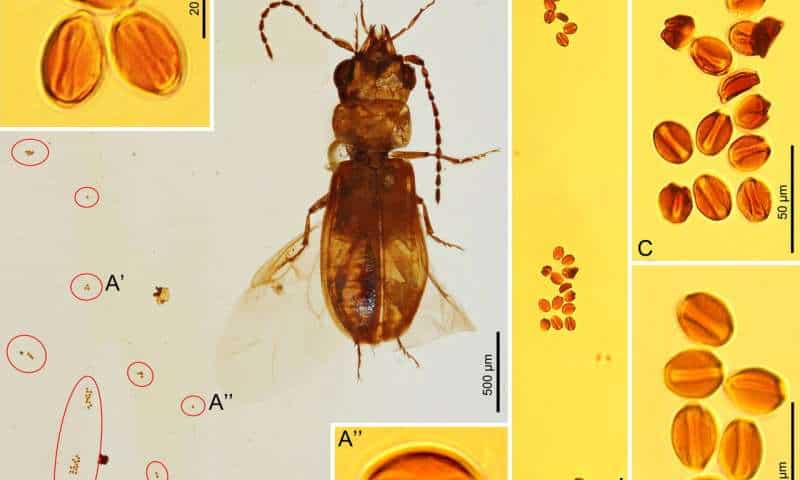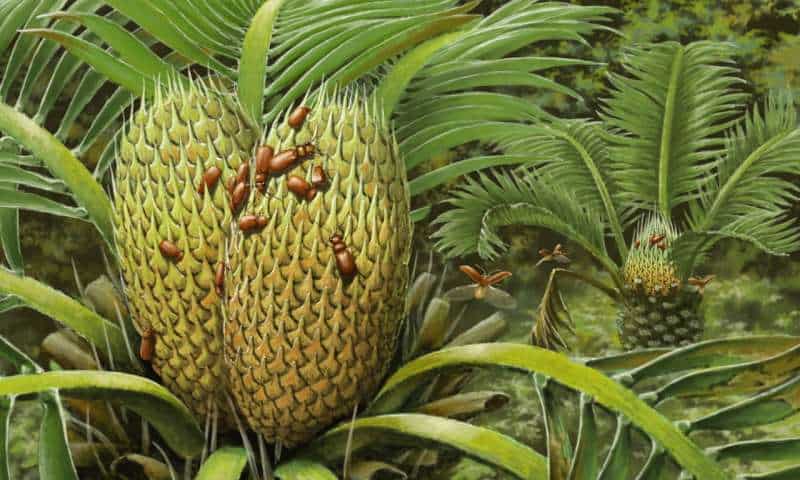
A dorsal view of the mid-Cretaceous beetle Cretoparacucujus cycadophilus, including the mandibular cavities it likely used for pollination. Credit: Chenyang Cai.
Believe it or not, but this excellently preserved beetle is 99 million years old! The unfortunate insect became trapped by sap, which eventually fossilized into amber. The really interesting bit about this fossil, however, is more subtle. Alongside the ancient boganiid beetle, scientists also discovered grains of cycad pollen. This suggests that cycads may have been the first insect-pollinated plants.
Before bees
Flowering plants (angiosperms) evolved to attract insects some 99.6 million to 65.5 million years ago, about the same time as the bugs that were pollinating them. But before angiosperms, animals like the 160-million-year-old Lichnomesopsyche gloriae, an extinct scorpionfly, used its 10-millimeter-long proboscis as a straw to suck out nectar from gymnosperms (flowerless plants), spreading pollen in the process.
Early pollinators are severely lacking in the fossils record, which is why this exquisite beetle trapped in Burmese amber is so important to science. It shows that the insect had an intimate relationship with cycads, an unusual evergreen gymnosperm.
“Boganiid beetles have been ancient pollinators for cycads since the Age of Cycads and Dinosaurs,” says Chenyang Cai, now a research fellow at the University of Bristol. “Our find indicates a probable ancient origin of beetle pollination of cycads at least in the Early Jurassic, long before angiosperm dominance and the radiation of flowering-plant pollinators, such as bees, later in the Cretaceous.”
The beetles were so involved with cycads that they evolved special adaptations like mandibular patches that transport pollen. Indeed, when Cai and colleagues examined the fossil more closely under a microscope, they discovered tiny pollen grains. Liqin Li, an expert in ancient pollen at the Chinese Academy of Sciences, later confirmed that the pollen grains belonged to a cycad.
A phylogenetic analysis explored the beetle’s family tree, showing that the insect belonged to a sister group to the extant (still surviving) Australian Paracucujus, which pollinate the relic cycad Macrozamia riedlei.
Bearing in mind the current distribution of related beetle-herbivore and cycad-host pairs in South America and Australia, the findings suggest that cycad pollination has an ancient origin. How old? Likely before the breakup of the Gondwana supercontinent during the Early Jurassic, some 167 million years ago, Cai says. But this is an unproven hypothesis at this stage — for instance, scientists will need to find fossilized cycad leaves from this period.
The findings appeared in the journal Current Biology.











